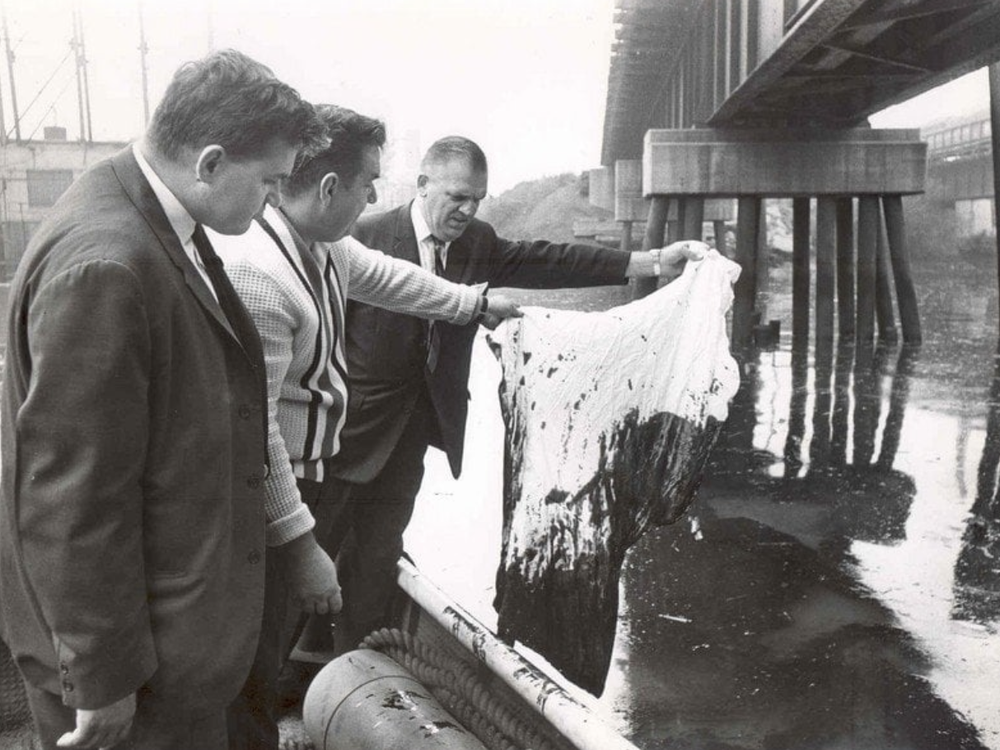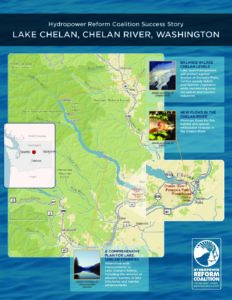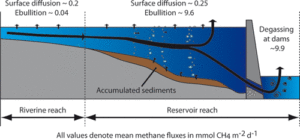EPA issues new definition of “waters of the United States” under the Clean Water Act…again

(City Council members inspect pollution of the Cuyahoga River 1964 – Cleveland Press Collection, Cleveland State University Library)
Just before the new year, the Environmental Protection Agency and the U.S. Army Corp of Engineers announced plans to formalize and clarify the definition of “waters of the United States”, or WOTUS, under the Clean Water Act after years of back and forth and uncertainty among regulators.
Signed in 1972, the Clean Water Act (CWA) has served as one of the hallmark laws governing environmental regulation and protection in the United States. Prior to the CWA, pollution of our nation’s waters was rampant and they were often regarded as the dumping ground of industry, leading to such extremes as the Cuyahoga River in Ohio catching fire numerous times.
However, like many broad-reaching regulations, the interpretation of the CWA has long been a topic of fierce debate and has been heard by the Supreme Court twice and is currently being heard in a third case (Sackett v. EPA) involving a north Idaho couple.
While this law has been debated in courtrooms and on campaign trails since it was signed, things really heated up in 2015 when the Obama administration signed new rules defining WOTUS. This set of rules expanded the CWA jurisdiction and was heralded by environmental organizations as a crucial step in the right direction while being vilified by industry lobbyists as governmental overreach and even unconstitutional.
Since the signing of the Obama-era rule, there has been an almost constant back and forth involving the courts and different attempts to push the legislation to one side or another. Most recently, the United States District Court for Arizona threw out the 2020 Trump-era replacement rule that severely gutted and rolled back the protections that the Obama EPA established. This leads us to today and the Biden administration’s attempt to provide some clarity to where things stand.
Under the new rule, the EPA revived a definition of what constitutes WOTUS that had been in place since 1986, reverting the definition to the pre-2015 understanding. Part of this revised rule includes two standardized tests to help determine jurisdiction of the CWA on a case-by-case basis for some of the more debated protections involving wetlands and non-navigable waters.
-
Relatively Permanent: This test established waterbodies that are “relatively permanent, standing, or continuously flowing waters connected to” traditional navigable waters are protected.
-
Significant Nexus: This test clarifies that certain waterbodies such as wetlands or ephemeral streams are subject to the CWA “based on their connection to and effect on larger downstream waters that Congress fundamentally sought to protect. A significant nexus exists if the waterbody (alone or in combination) significantly affects the chemical, physical, or biological integrity of traditional navigable waters, the territorial seas, or interstate waters.”
In a press release announcing the new rules, EPA Administrator Michael S. Regan stated “Following extensive stakeholder engagement, and building on what we’ve learned from previous rules, EPA is working to deliver a durable definition of WOTUS that safeguards our nation’s waters, strengthens economic opportunity, and protects people’s health while providing greater certainty for farmers, ranchers, and landowners.”
While we are pleased to see some additional clarity come from the Biden administration regarding the CWA, we know that Idaho thrives on clean water and hope to see additional protections make their way into law sooner rather than later. However, if the past has taught us anything, we should all expect this most recent set of rules to be challenged once they take effect later this year.
This post originally appeared on News – Idaho Rivers United.


